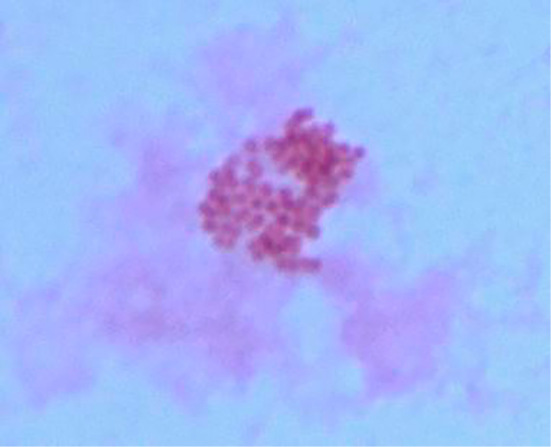A 37-year-old man with a history of intravenous drug abuse presented with a 1-month history of a fever, chills and fatigue. The presence of a systolic ejection murmur was observed at the apex on a cardiac examination. Transesophageal echocardiography revealed a vegetation measuring 12 mm × 10 mm on the aortic valve. Multiple blood cultures turned positive; Gram staining revealed what appeared to be a Gram-negative coccus (Picture). Gemella species are Gram-positive cocci and were previously considered to be viridans streptococci. Gemella spp. are commonly found as normal residents of the oral and gastrointestinal tracts, and they tend to cause endocarditis among patients with valvular diseases (1). Gemella spp. tend to decolorize easily on Gram staining due to their relatively thin cell walls; therefore, they may appear Gram-negative. The definitive identification of Gemella spp. is of clinical importance, since the treatment of endocarditis due to Gemella spp. requires a more intense and prolonged course of antibiotic therapy than usual. It normally requires the same treatment regimen as Enterococcus species (2).
Picture.

The author states that he has no Conflict of Interest (COI).
References
- 1. Facklam RR. Physiological differentiation of viridans streptococci. J Clin Microbiol 5: 184-201, 1977. [DOI] [PMC free article] [PubMed] [Google Scholar]
- 2. Taimur S, Madiha R, Samar F, Bushra J. Gemella morbillorum endocarditis in a patient with a bicuspid aortic valve. Hellenic J Cardiol 51: 183-186, 2010. [PubMed] [Google Scholar]


